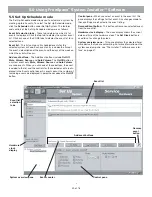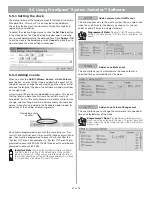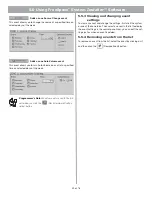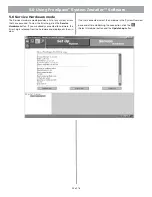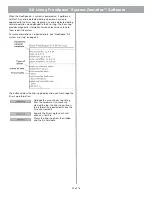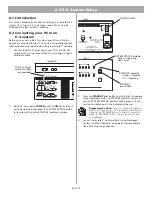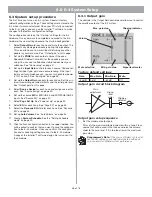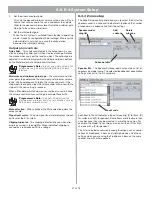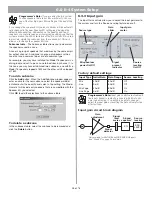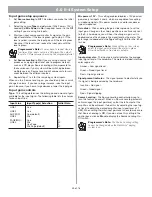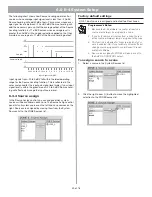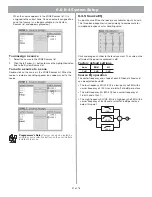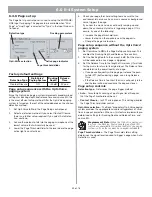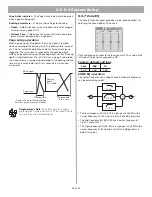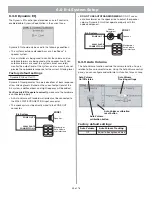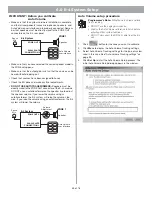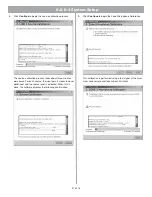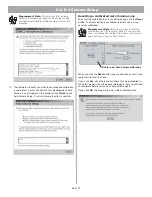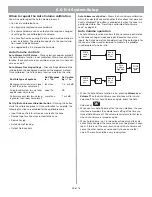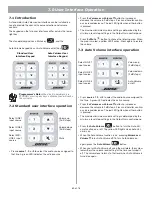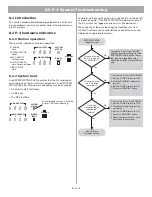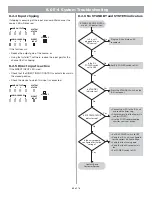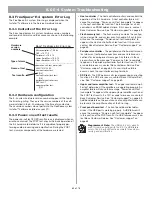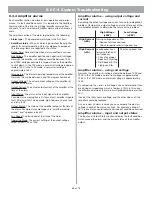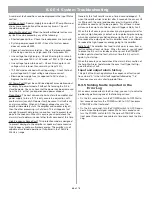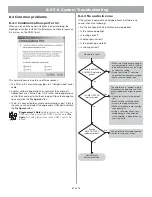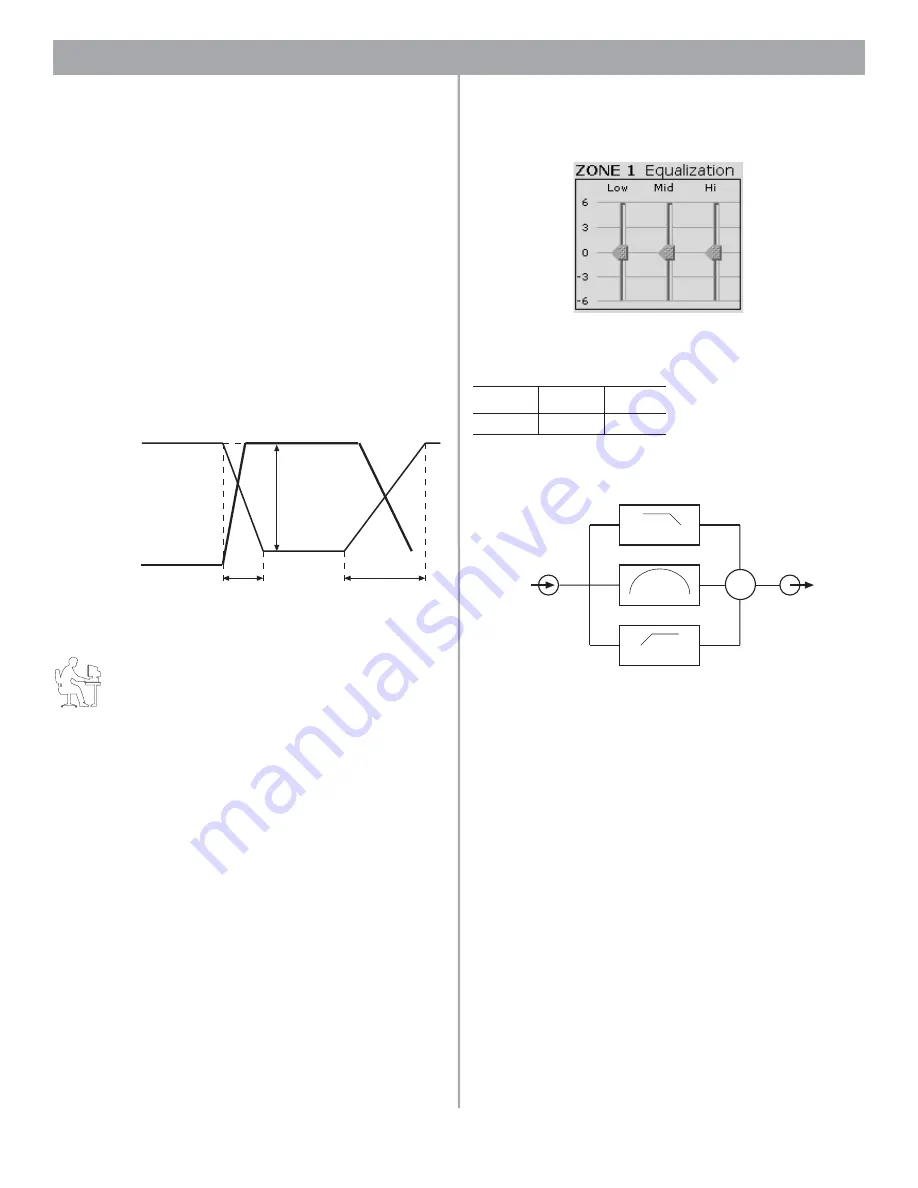
53 of 76
6.0 E-4 System Setup
Page Active indicator
– The Page Active indicator will be green
when a page is being sent.
Ducking parameters
– There are two settings for ducking:
•
Depth
– Determines how much to reduce the level of program
material when a page starts.
•
Release Time
– Determines the amount of time to keep pro-
gram material reduced after a page ends.
Page setup operation
When a page signal is triggered, the music signal is ramped
down according to the ducking time. The ducking time is preset
at 20 ms for automatic detection and 0 ms for contact closure
triggering. The music level is reduced by the ducking depth
which can be adjusted using the ducking depth control. Ducking
depth is adjustable from 0 to –40 dB. Once a page is completed,
the music volume is ramped up according to the ducking release
time, which is adjustable from 0 to 5 seconds in 0.5-second
increments.
Programmer’s Note:
The attack time for a page is
approximately 1 millisecond for a PTT input and 20 milli-
seconds for a voice-activated input.
6.3.7 Zone EQ
The Zone EQ control panel provides a three-band equalizer for
adjusting the sound quality of the zone.
Click and drag each slider to the level you want. The scale on the
left side of the panel is expressed in dB.
Factory default settings
ZONE EQ operation
The center frequency and shape of each EQ band is fixed and
can be adjusted by ±6 dB.
• The low-frequency EQ (LF-EQ) is a low-pass shelf EQ with a
corner frequency of 125 Hz and a roll-off of 6 dB per octave.
• The mid-frequency EQ (MF-EQ) has a center frequency of
1.6 kHz and a Q of 1.
• The high-frequency EQ (HF-EQ) is a high-pass shelf EQ with a
corner frequency of 8 kHz and a roll-off of 6 dB per octave
below this point.
Music signal
Ducking
depth
0 to –40dB
Page signal
Ducking time:
Fixed at 20 ms for Auto Detection,
0 ms for Contact Closure Detection.
Release time
0 to 5 secs
Low
Mid
Hi
0 dB
0 dB
0 dB
MF-EQ
LF-EQ
HF-EQ
∑


